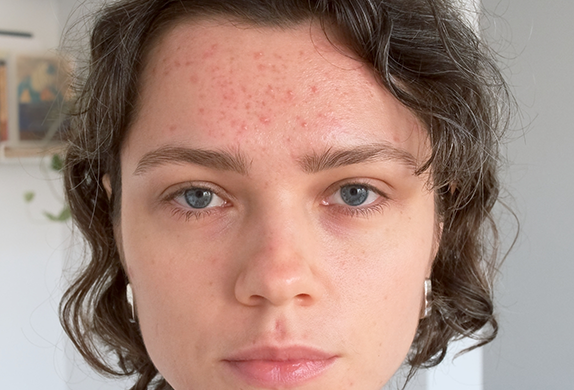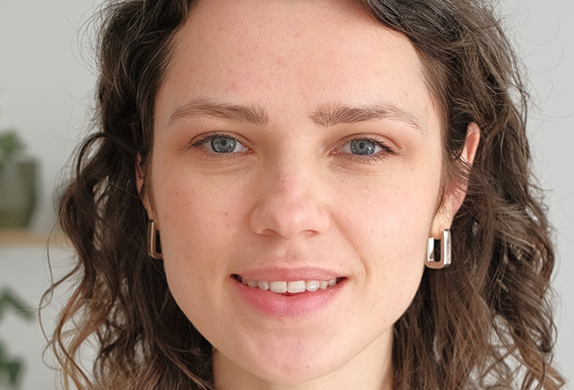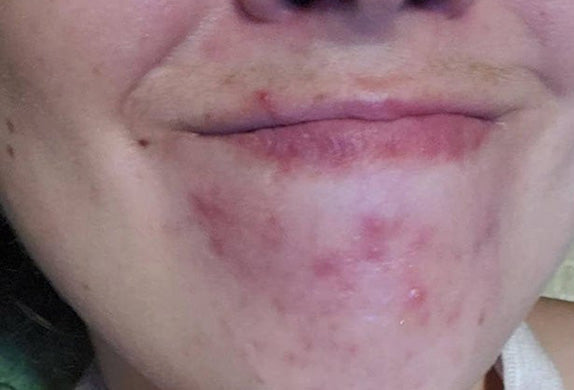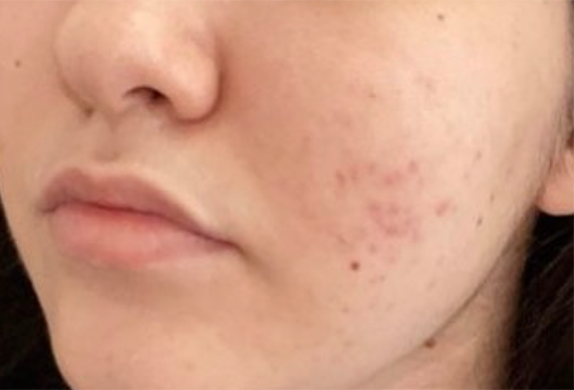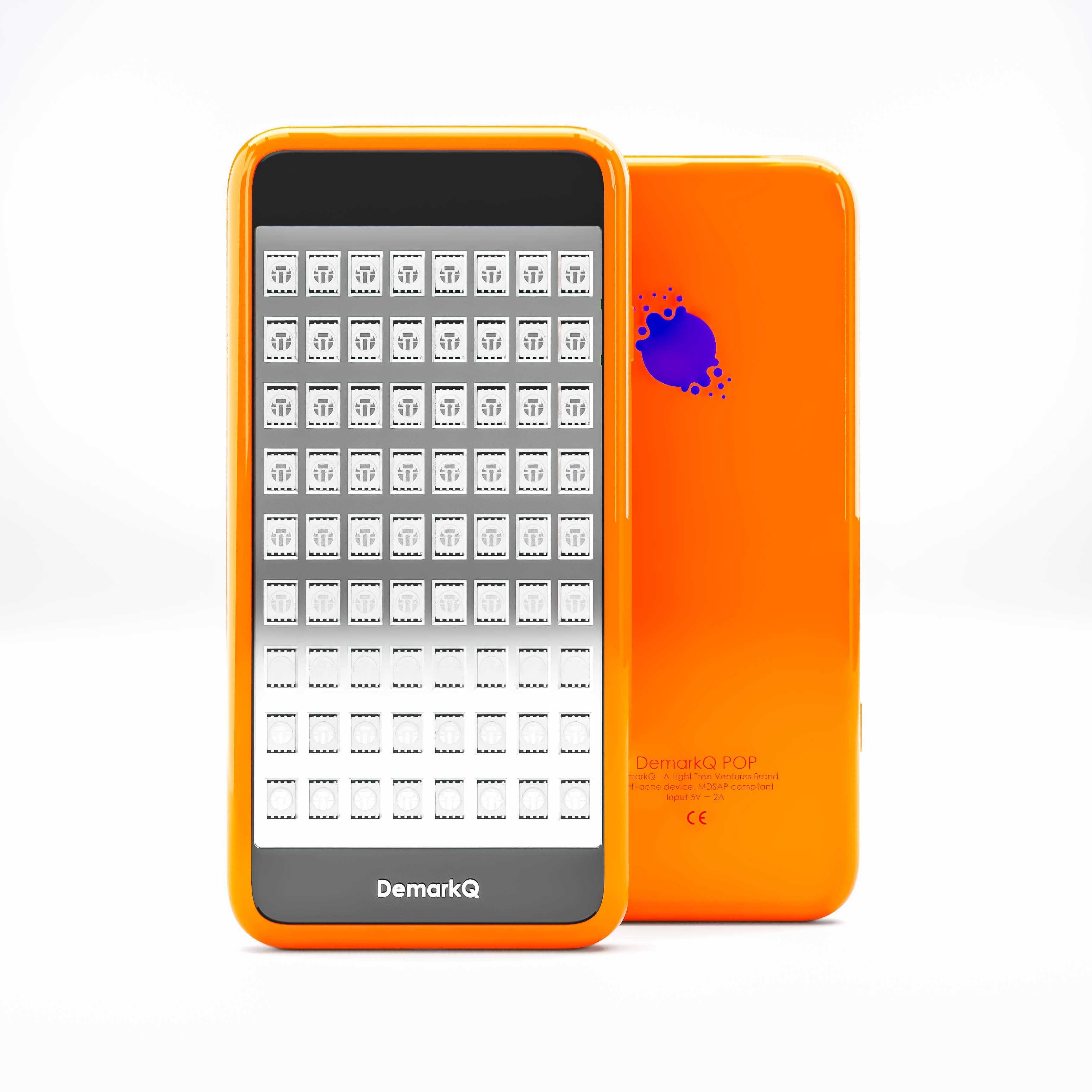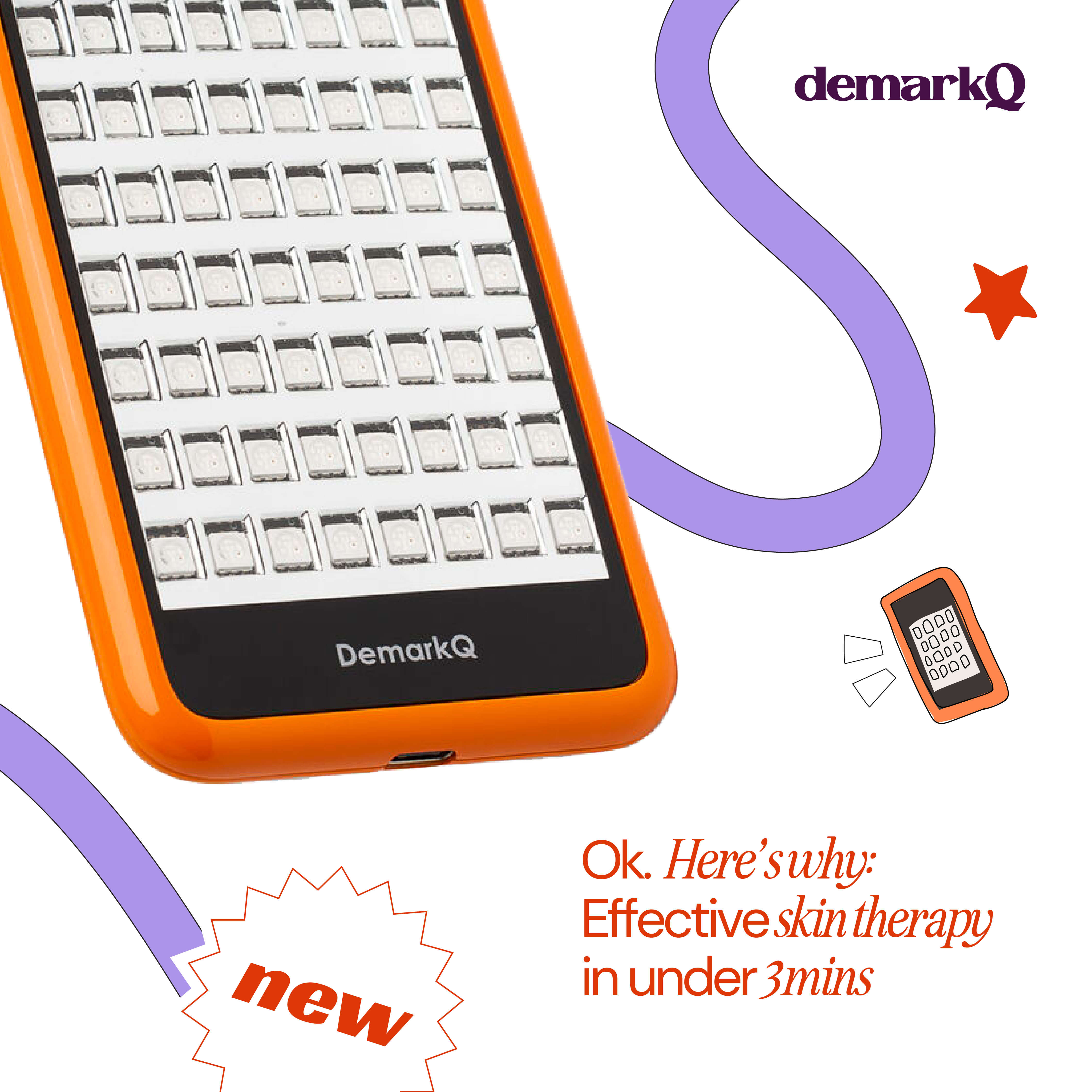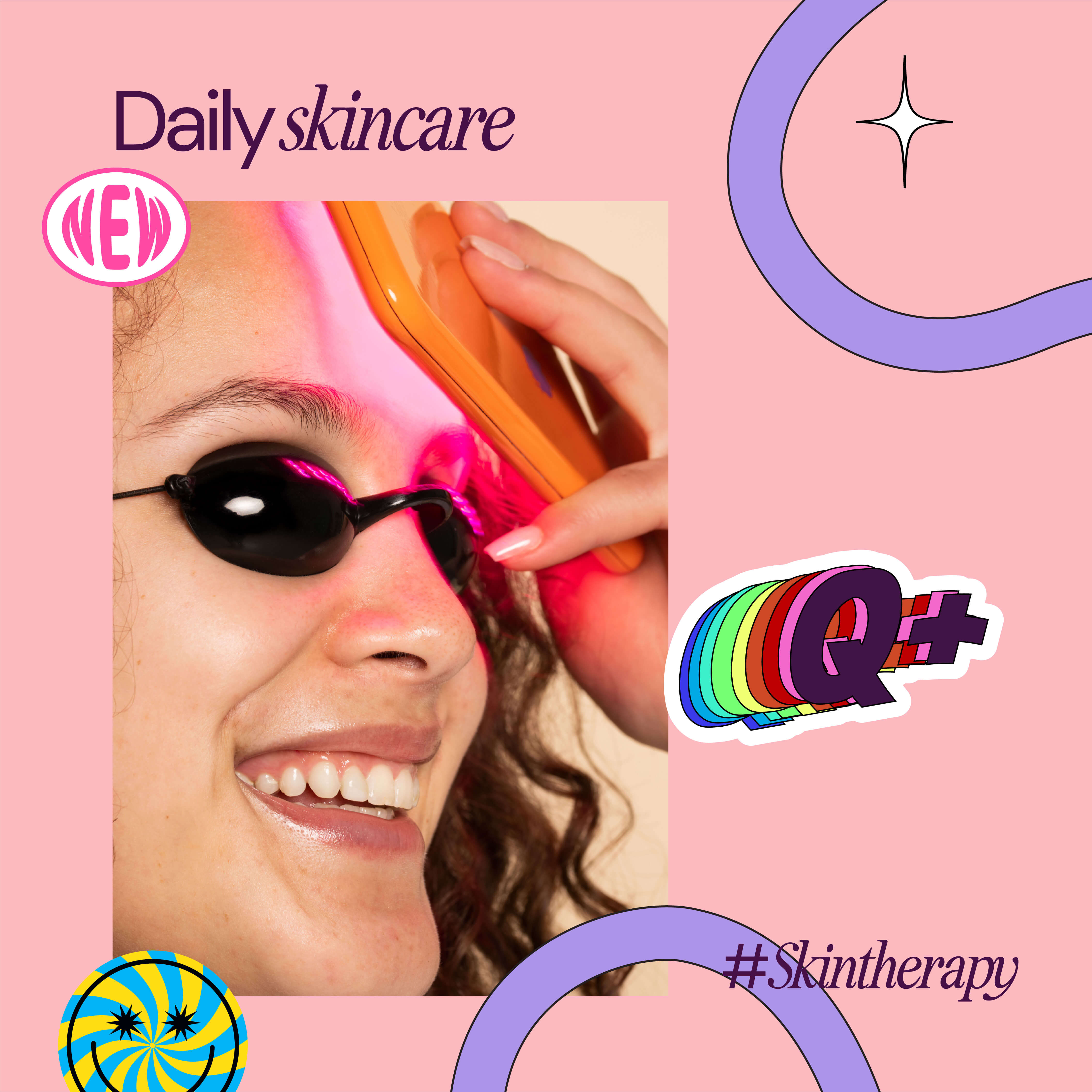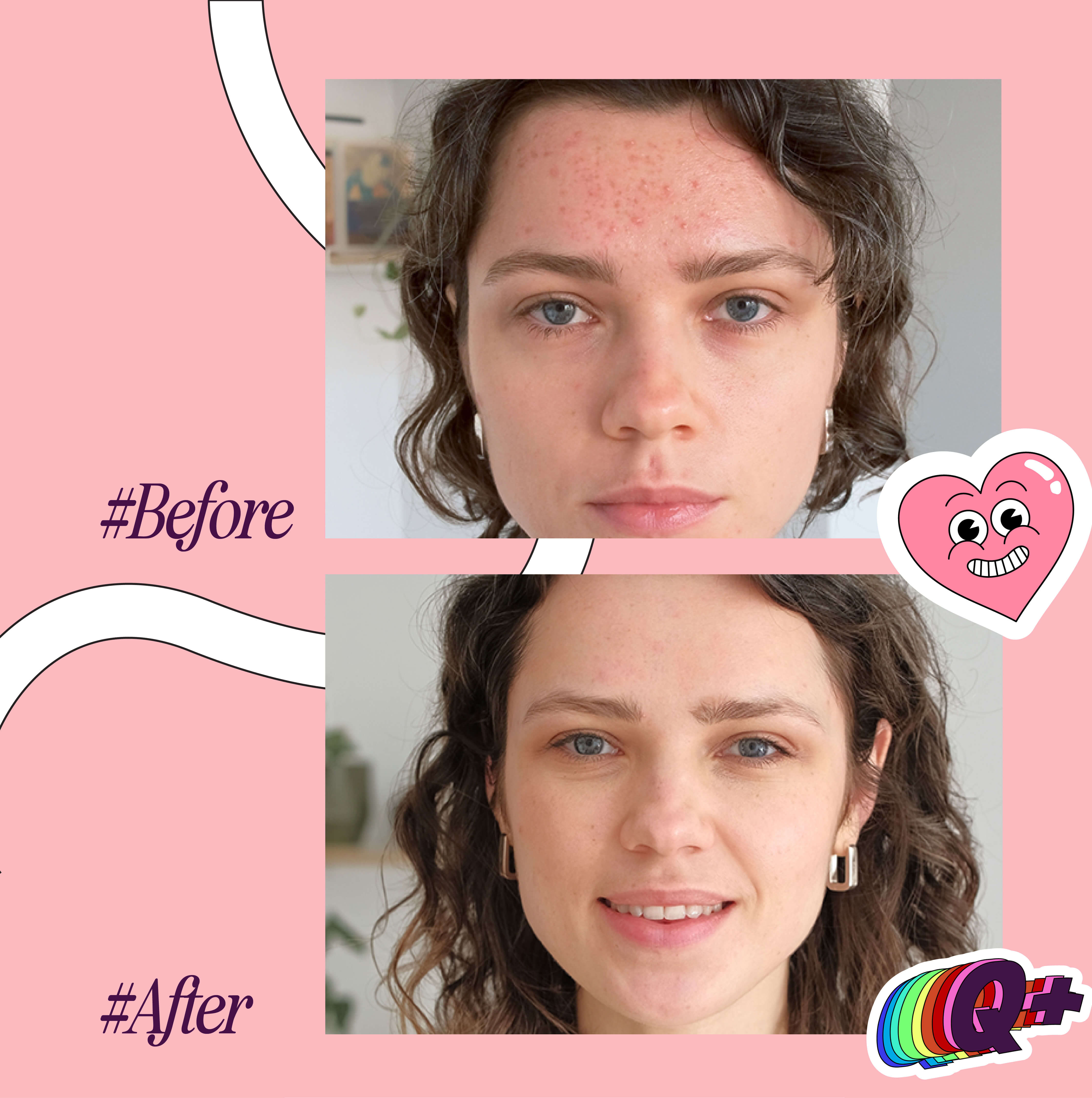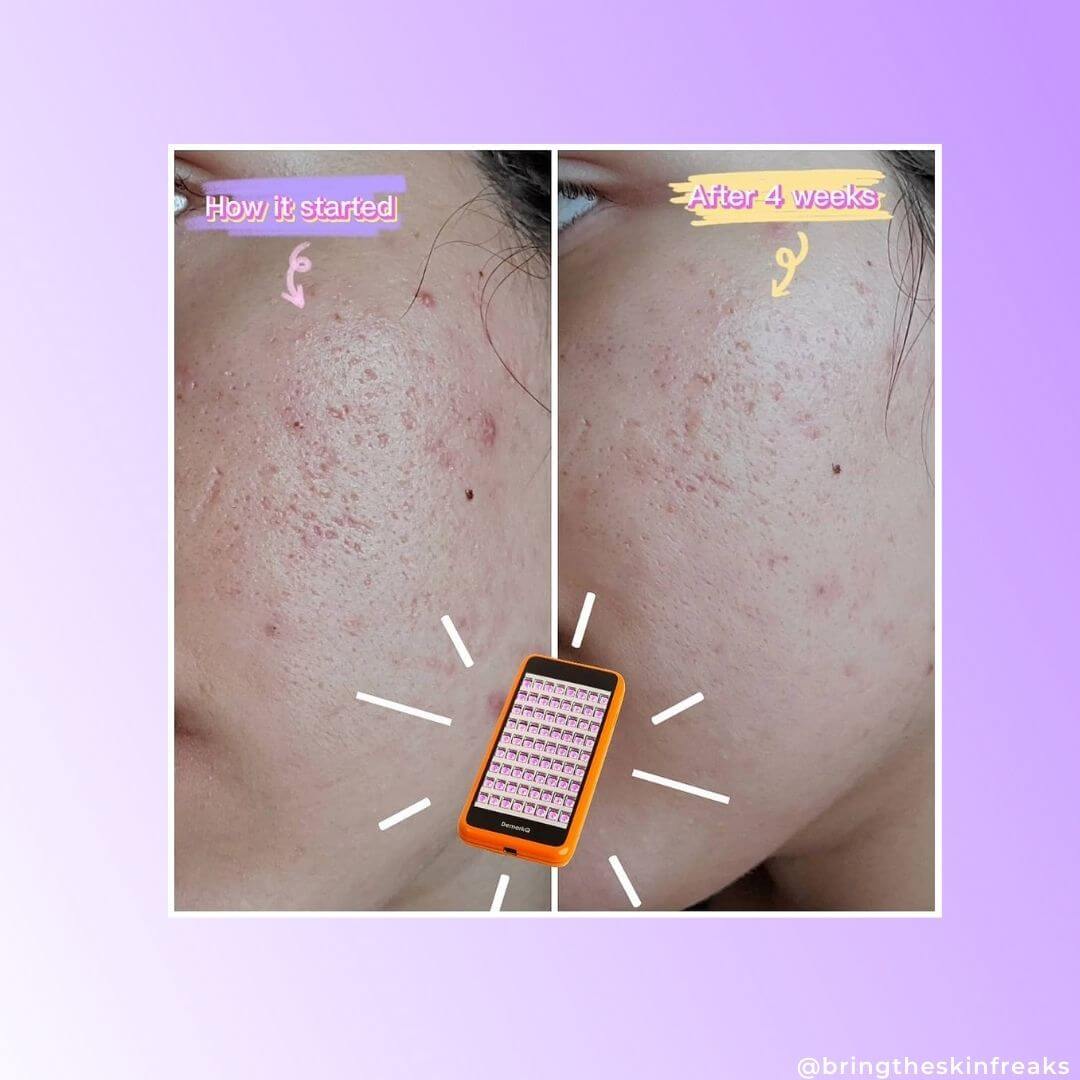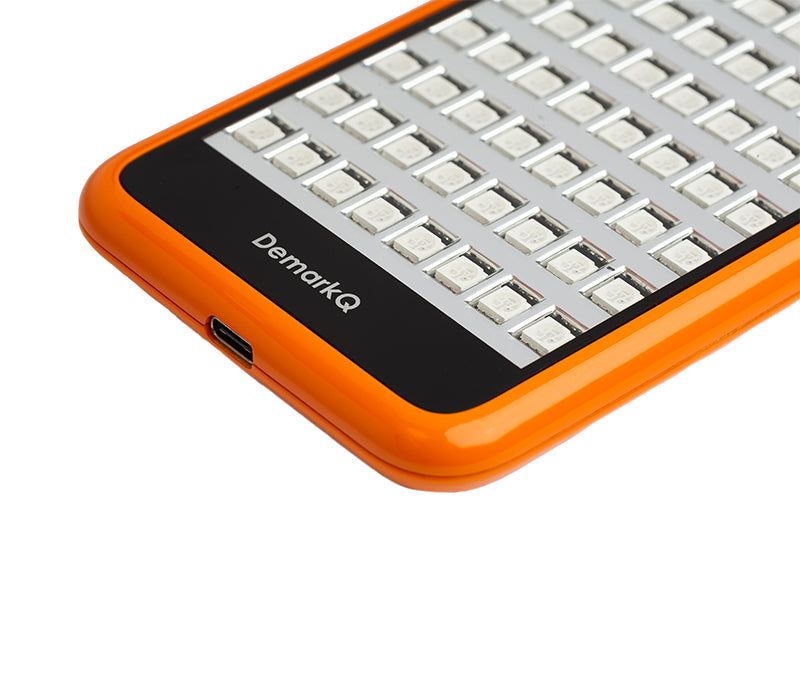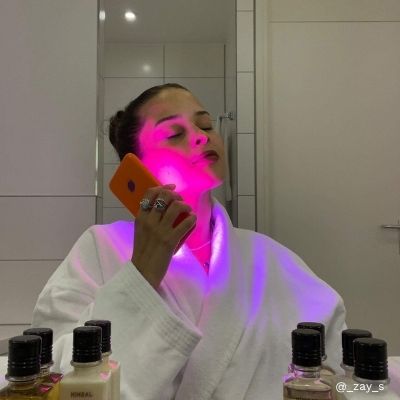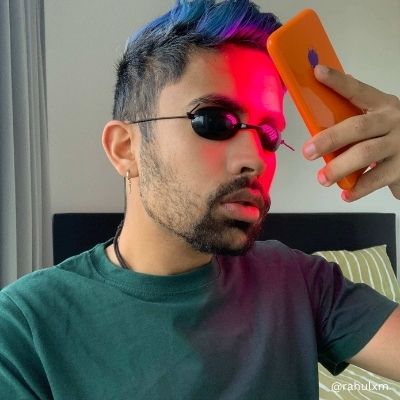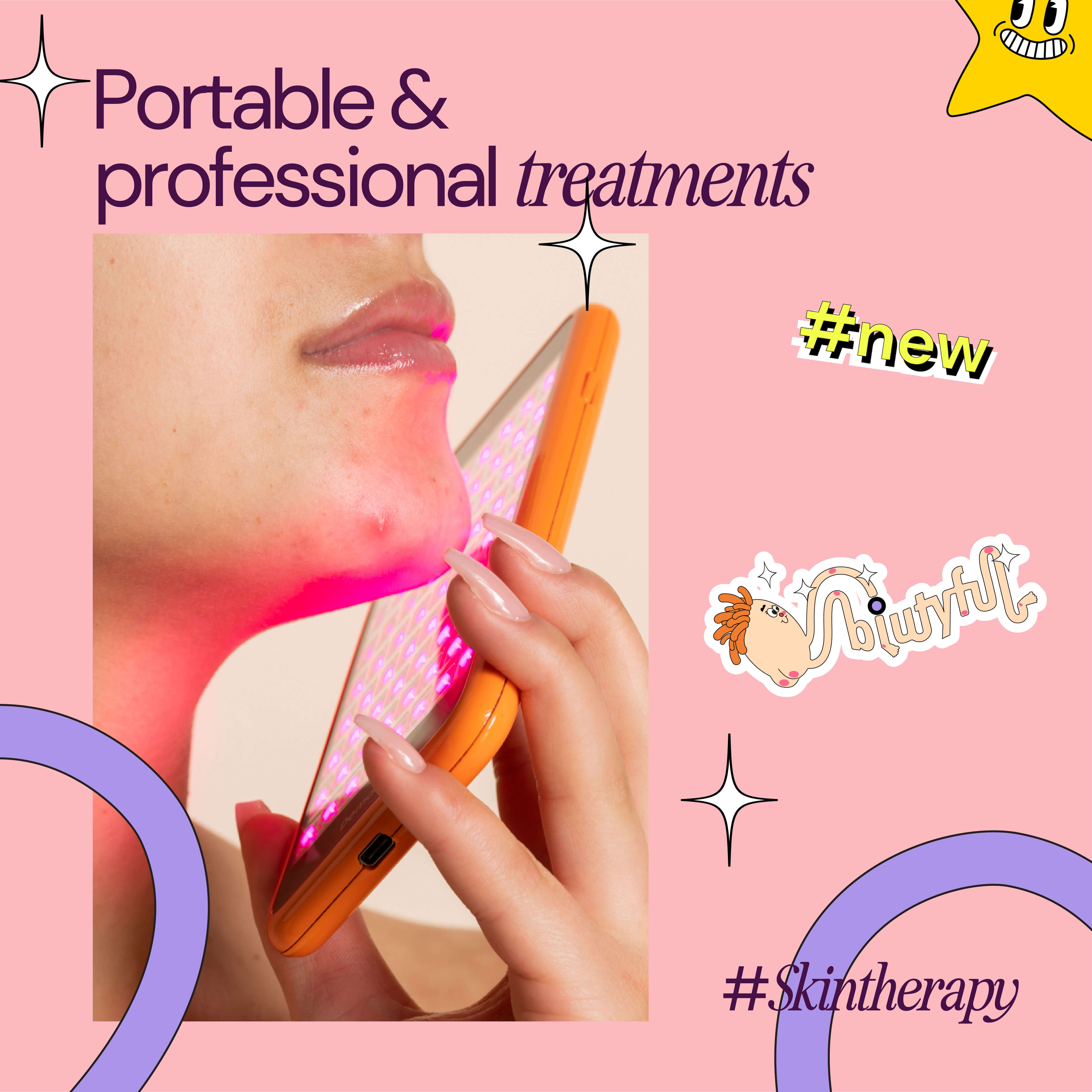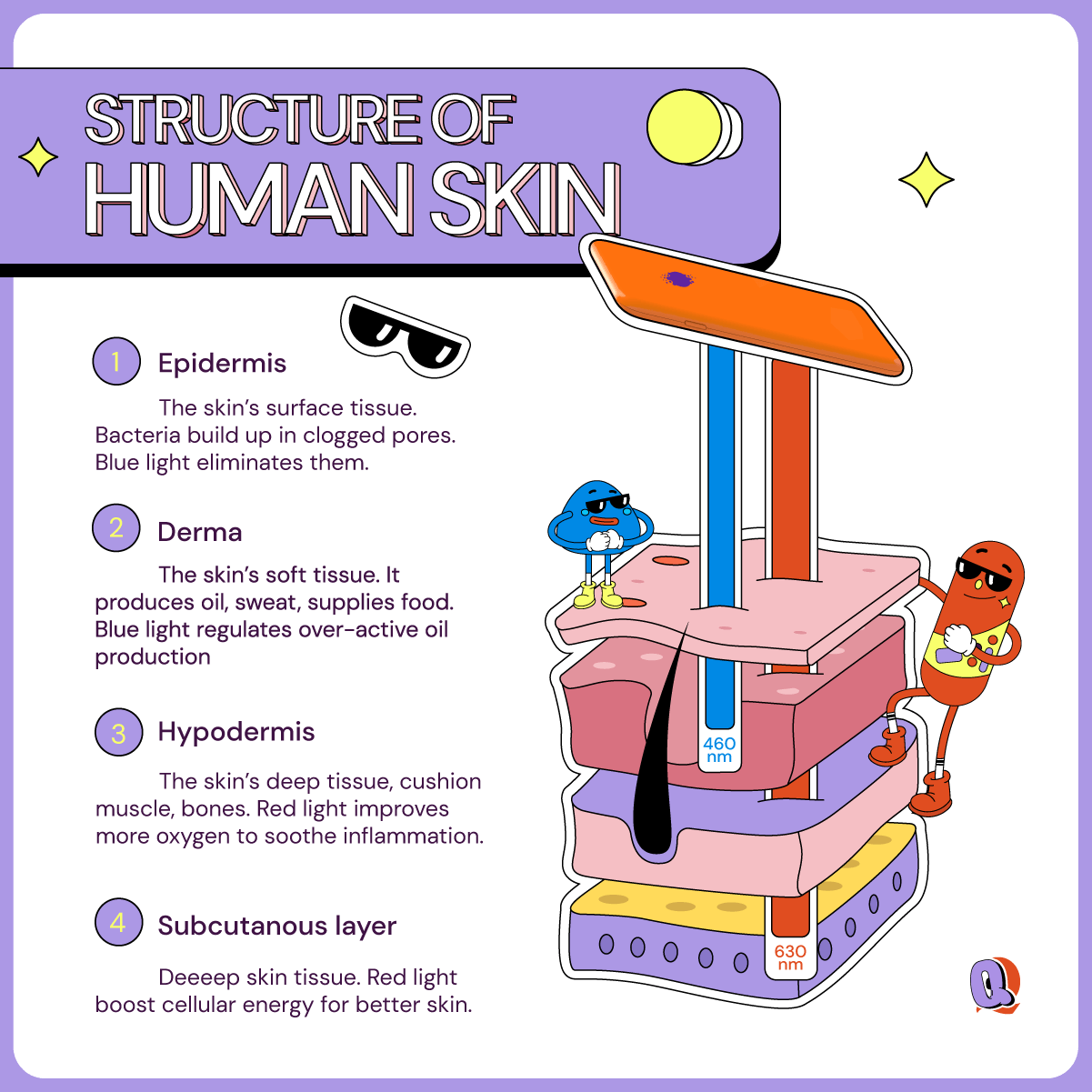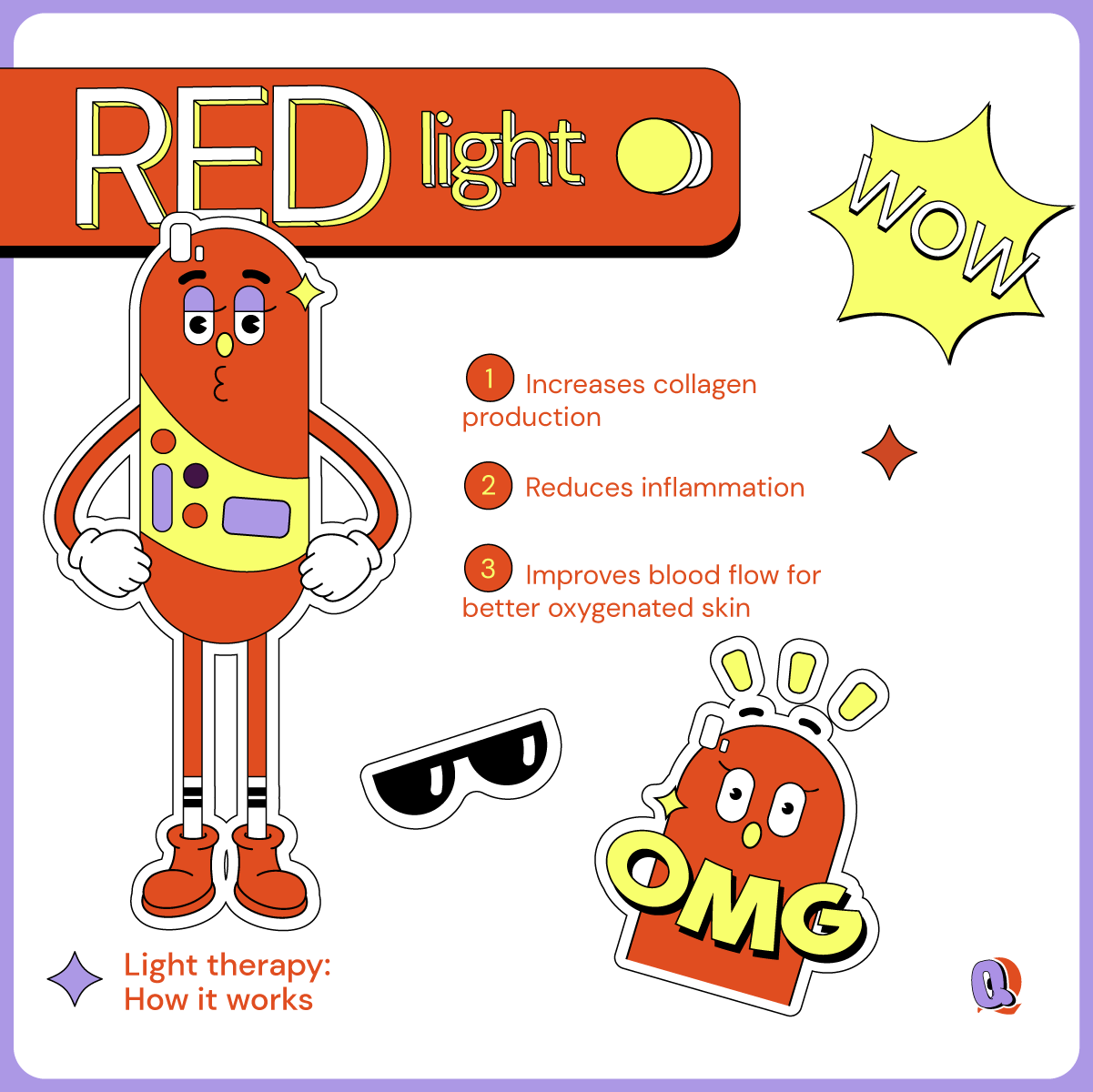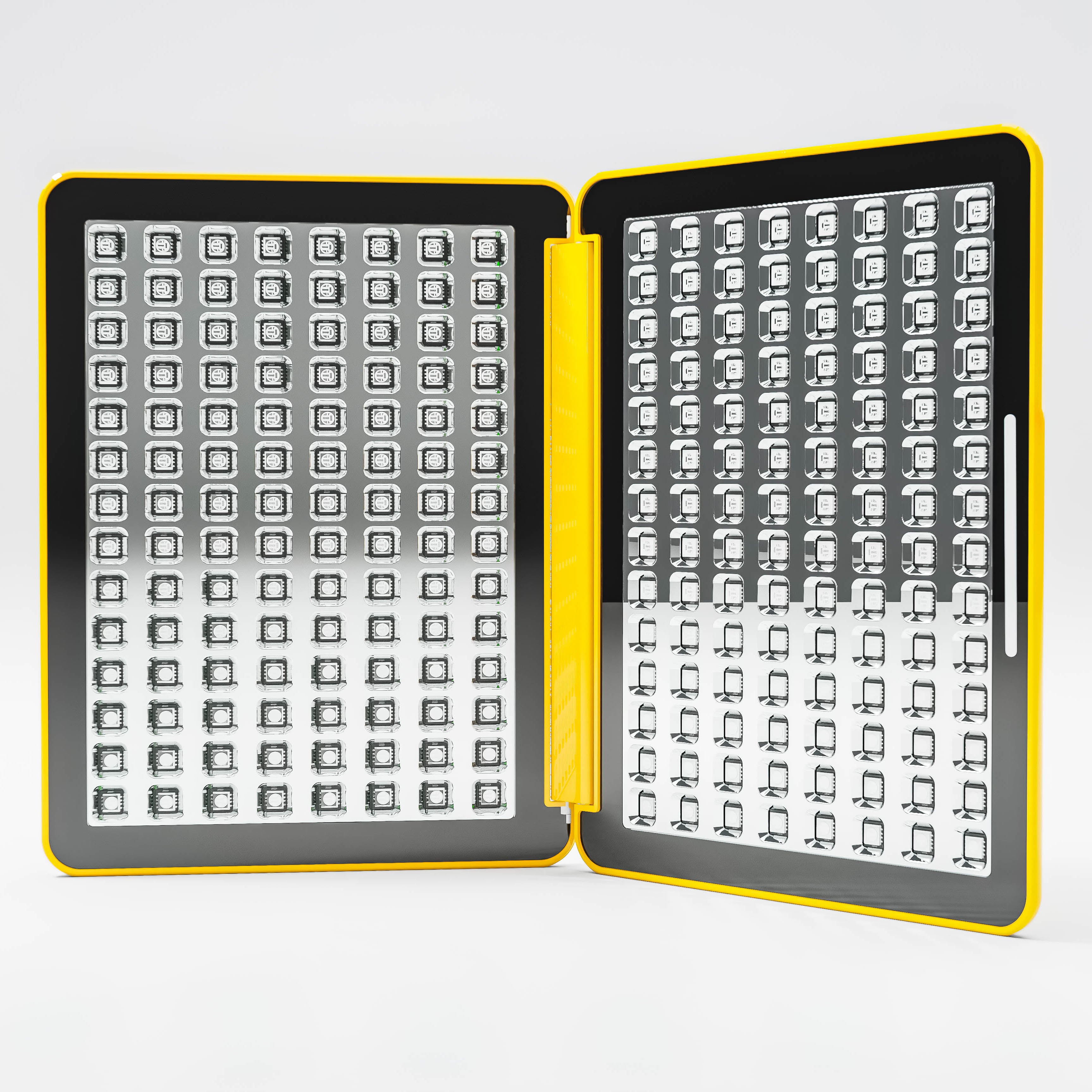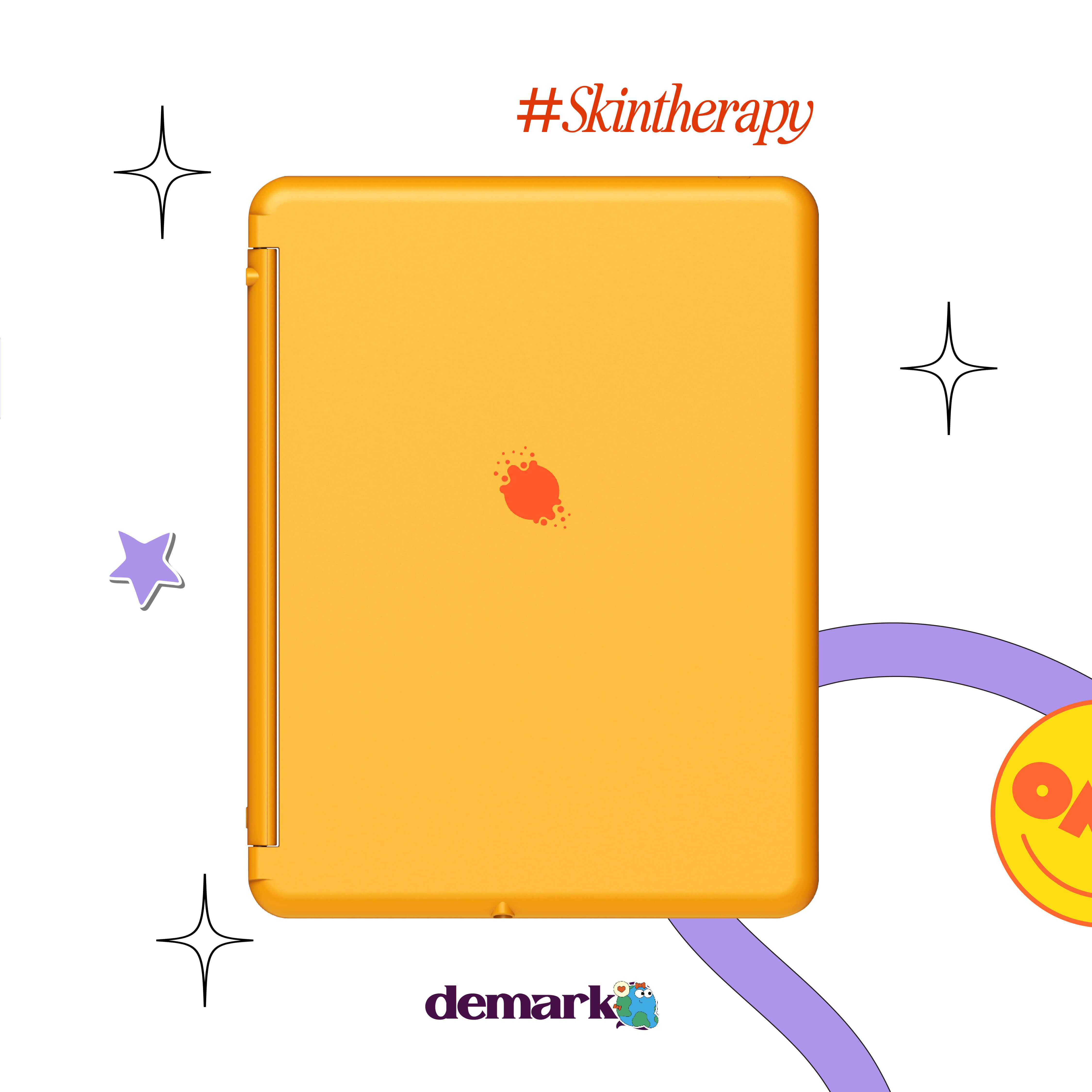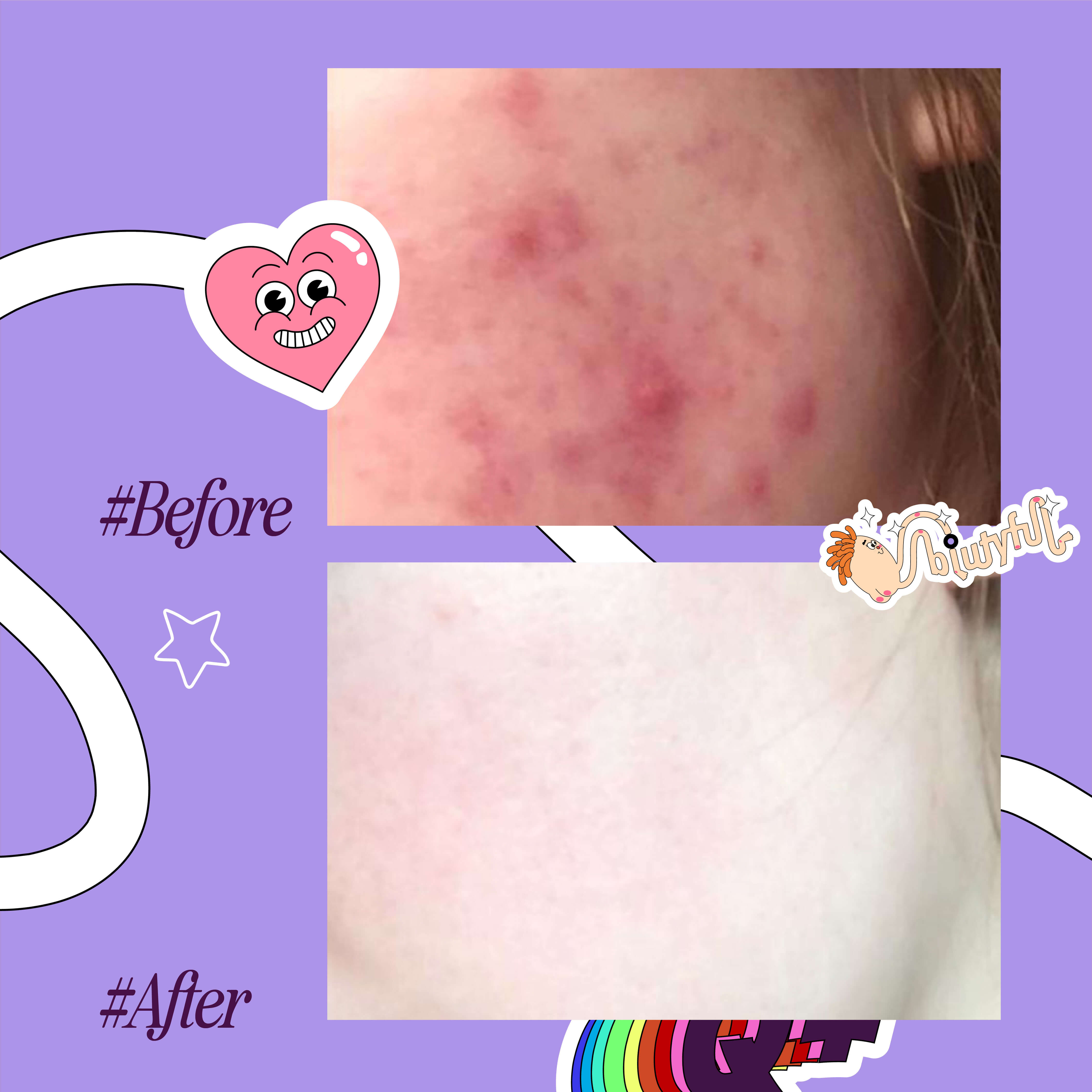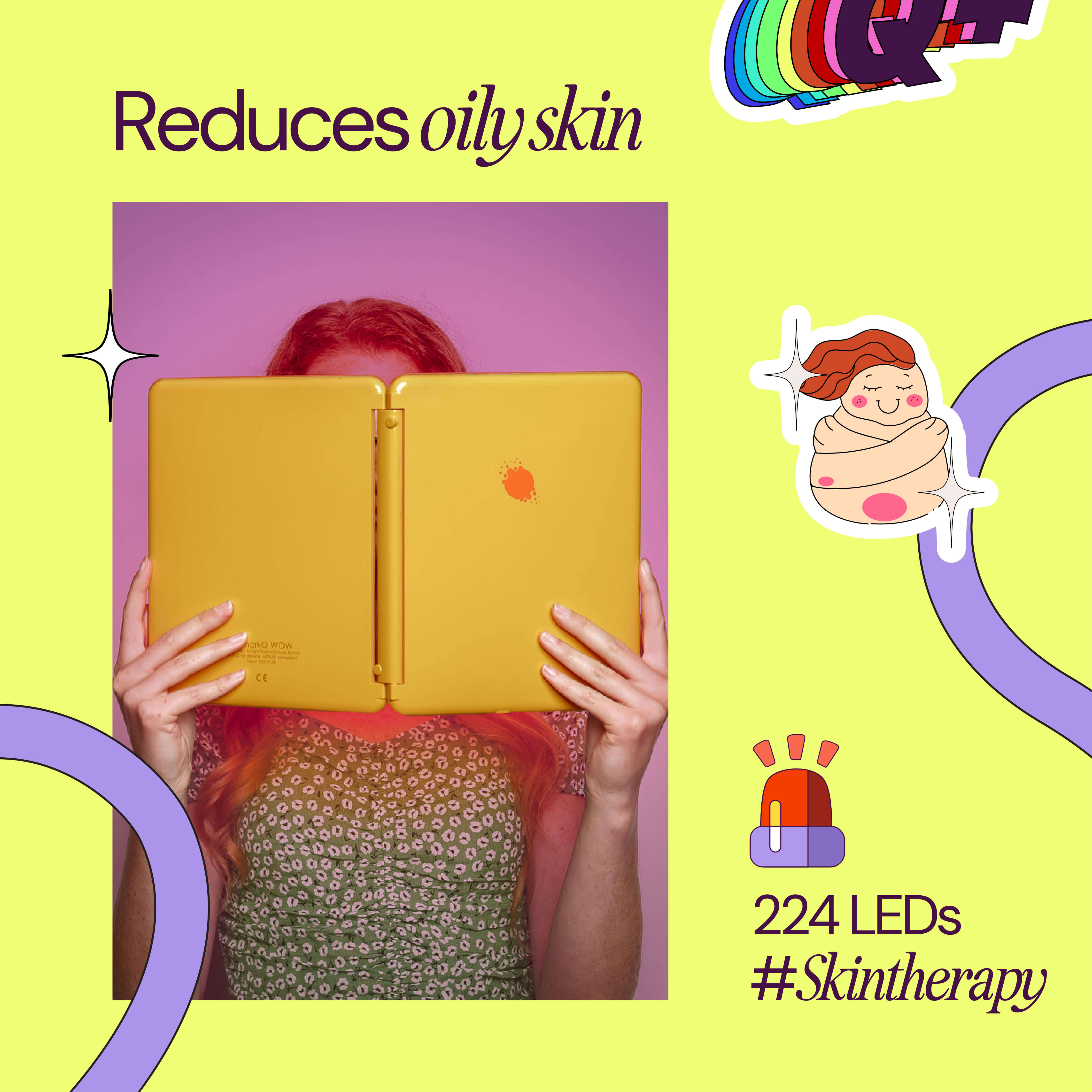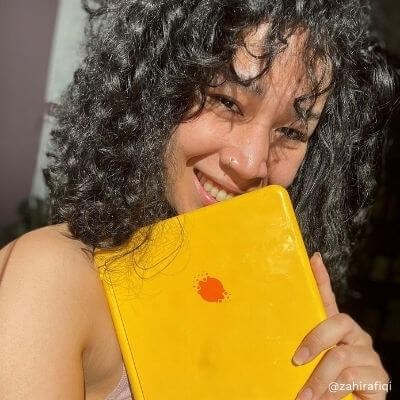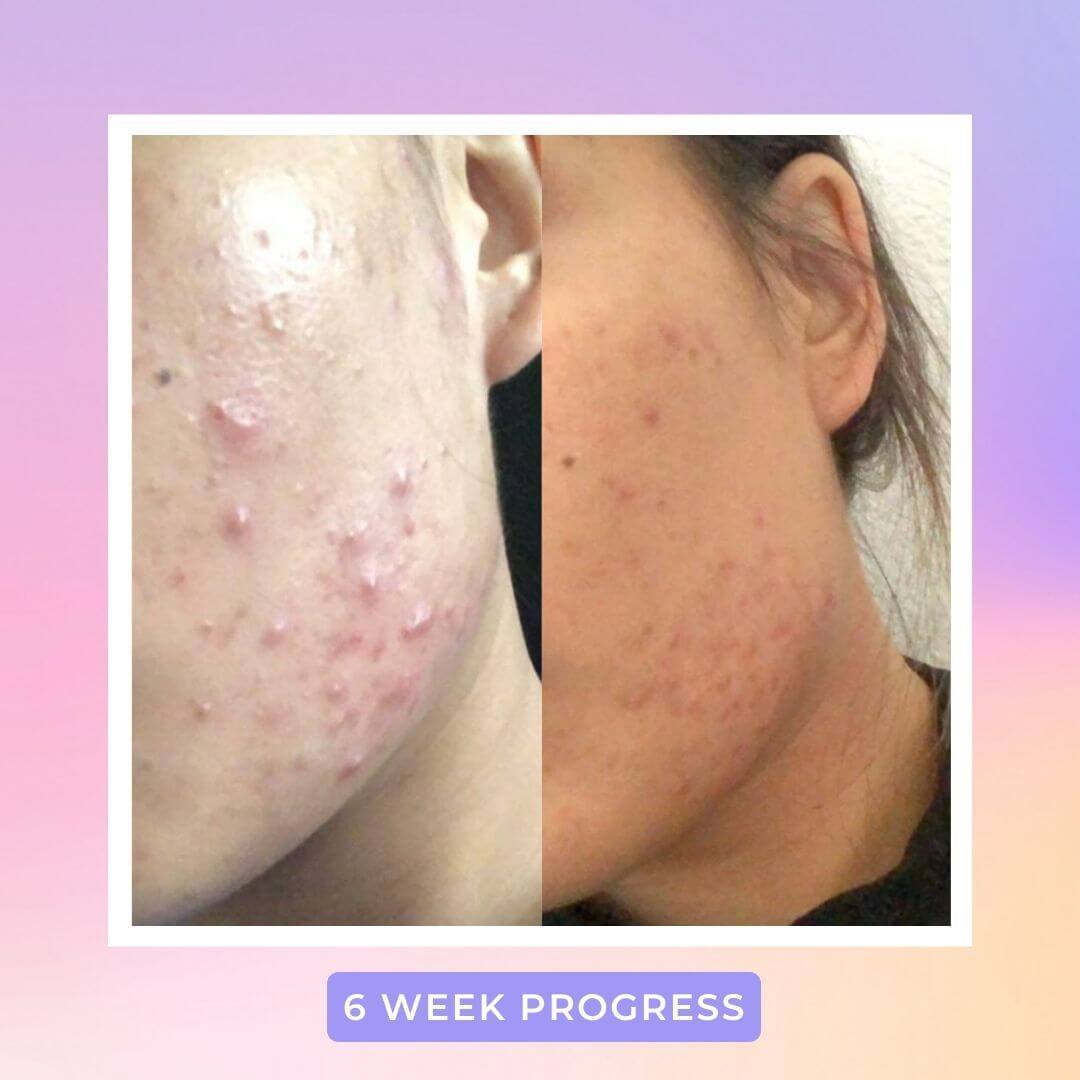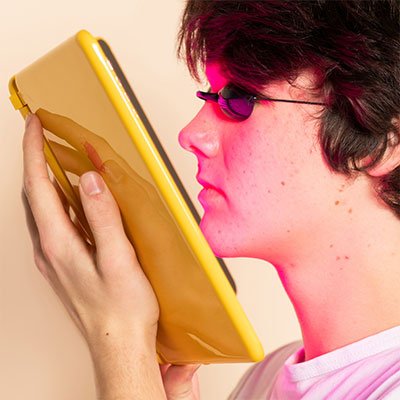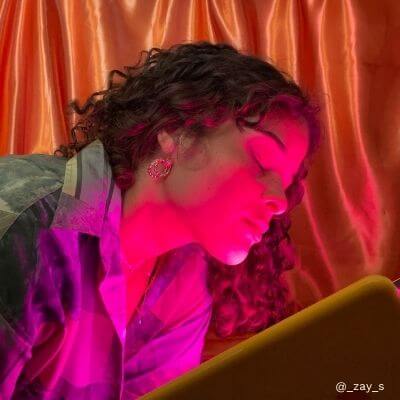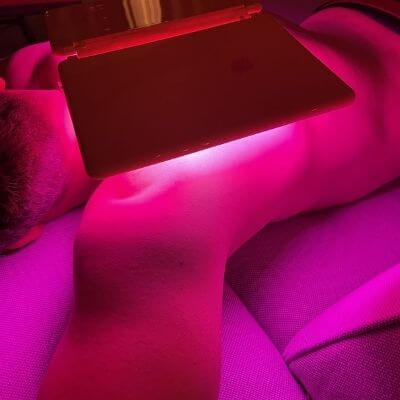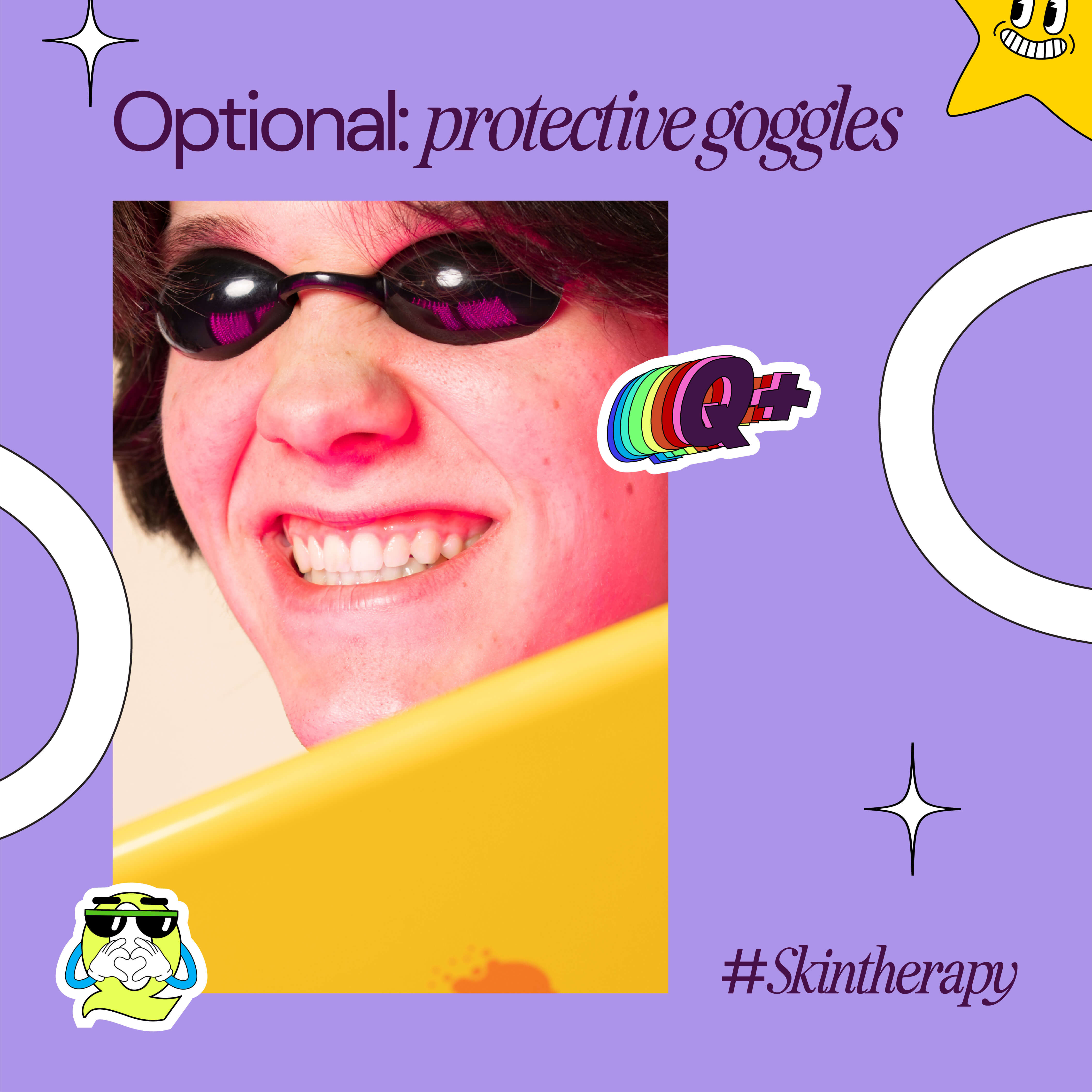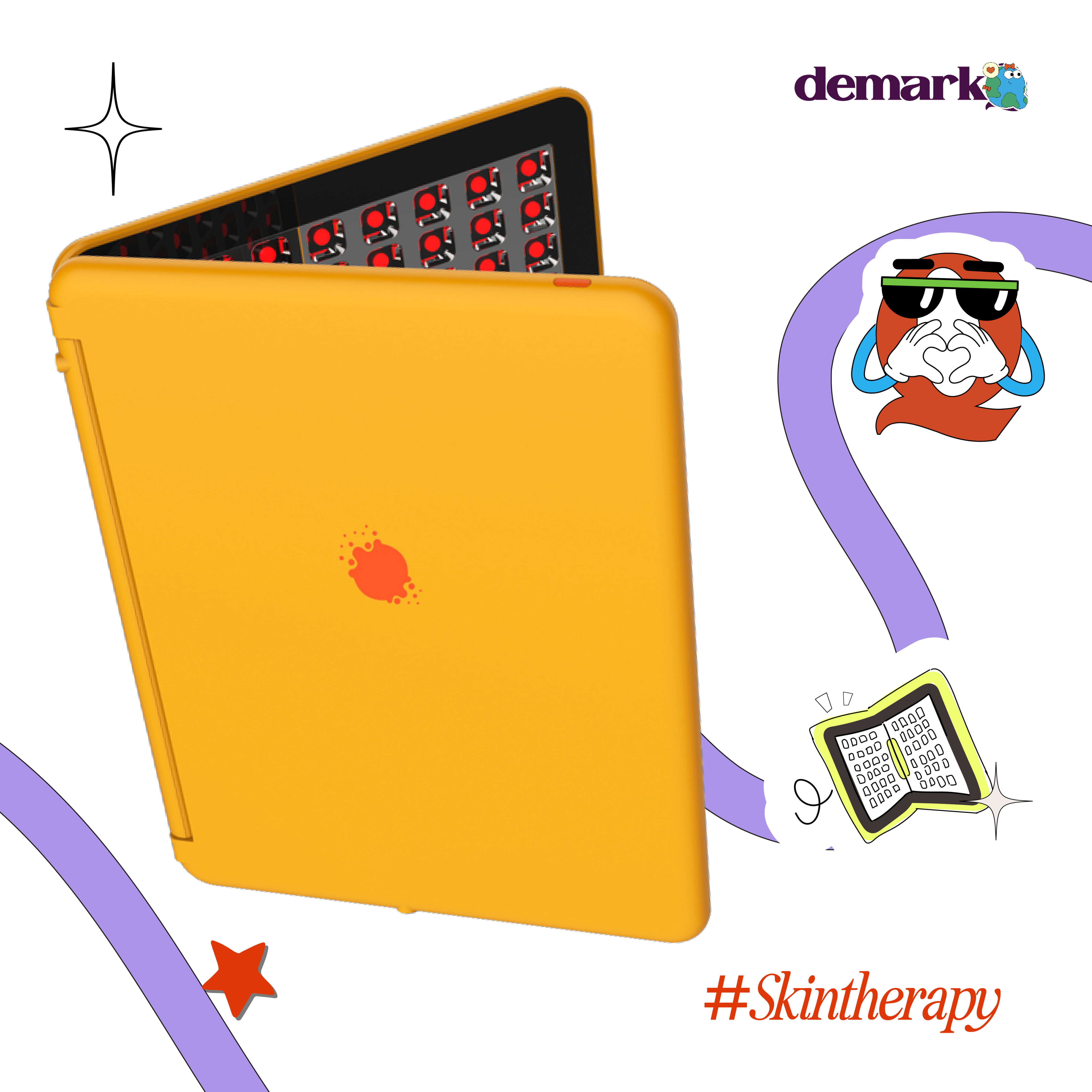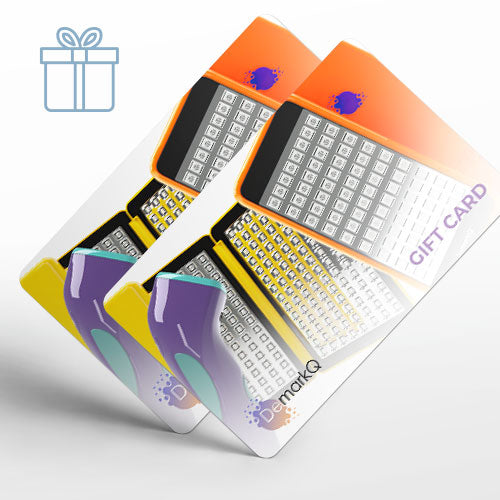As LED light therapy gains more popularity, with celebrities like Lorde to Mindy Kaling swearing by the treatment, you might have seen the light-up masks on your Instagram feed. While it definitely looks like a mood, it's understandable if
you're still confused about how exactly it would work. After all, this treatment greatly deviates from the usual gels, creams, and patches.
But with a better understanding of the skin flora and the healing properties of light, innovations like LED light therapy (especially blue light) are one of the best options to clear skin.
Different wavelengths of visible light (which can be distinguished by colors) have different impacts on the skin. Blue LED light, in particular, is gaining popularity among the acne-prone community. And
for a good reason. There is a ton of research to back up the many skin-related benefits of Blue LED light therapy, and we will discuss all of them, including what exactly does Blue LED light do to warrant such claims? And if so, how exactly does it work?
Let’s start from the beginning. The history of LED light as a whole is quite interesting. It has been explored as a wound-healing solution by NASA scientists when looking into medical aid for astronauts in outer space. It is also trusted by the military and health practitioners worldwide. Different types of visible light target different conditions, many of them to do with keeping healthy skin.
Does blue light therapy clear your skin?
Short answer – yes, it does!
Long answer - Multiple studies explore the impact of blue phototherapy on skin conditions, including acne vulgaris, eczema, and skin allergies (some are linked below). These studies have repeatedly found a significant improvement in the participant's skin health, from a visible reduction in lesions to reduced inflammation and redness.
But how does Blue LED light therapy clear your skin?
Blue LED light combats acne in three ways:
1. Blue light kills Propionibacterium Acnes bacteria
Blue LED light is anti-microbial. That's just a fancy way of saying it kills off microbes like bacteria and fungi. This includes Blue Propionibacterium acnes (or P. Acnes) bacteria whose overgrowth causes painful, inflamed pimples we all know and hate. At the correct output and exposure, blue light is absorbed into the skin, triggering reactive free radicals that kill off P. Acnes bacteria and flatten pimples.
Blue light is also effective against fungal and yeast infections like Malassezia folliculitis also known as fungal acne.
2. Reducing inflammation:
A study on the anti-inflammatory properties of blue light found that exposure to Blue LED light can stop producing specific proteins (cytokines) that contribute to inflammation. This means it has calming properties that reduce inflammatory side-effects like swelling, excessive redness, and painful, sensitive skin.
3. Reducing sebum production:
Studies have also found that blue light inhibits sebocyte proliferation. This means that it reduces oil/sebum gland activity, reducing the probability of clogged pores, and therefore, pimples. This effect is even more substantial when combined with red LED light therapy, which can penetrate deeper into the skin.
With DemarkQ devices, we have combined red and blue LED lights so you can get the benefits of both lights during the same treatment.
Benefits of using blue LED light over other acne treatments
1. As we learned before, blue LED light clears acne without side effects like pain and inflammation
2. Lasting results
3. No recovery time needed
4. Suitable for all skin types, especially people who have sensitive skin
5. It can be easily combined with other active ingredients like AHA/BHA acids, OTC retinoids, oils
6. Stimulates collagen when combined with red LED light, so your skin recovers faster
A step-by-step guide to using Blue LED light therapy at home
Fortunately, using LED light therapy is a straightforward and time-efficient process.
1. Start by washing your face with a gentle cleanser. Pat dry
2. Put on your protective goggles to prevent exposure to your eyes
3. Turn on the device and hold it against your skin for the recommended time or until the devices automatically turns off
3. Continue with your general skincare routine: toner, serum, moisturizer, SPF.
Make the best out of Blue LED light therapy:
Like we discussed, Blue light is handy for individuals who are prone to inflamed acne. But what are the steps you can take to get the best results possible?
Do it consistently
Studies and testimonials have found that consistent use of blue light therapy can help reduce acne. Most studies required participants to try out the product for 4 to12 weeks. While different people show different results, it is recommended to at least give it four weeks of consistent use for visible results.
Hold the led device close to your skin
The closer, the better. This way, the light doesn't have to travel so far to reach your skin and do its magic.
Do it on bare skin
This follows the same principles as the previous point we mentioned. The less distance, or in this case, layers of skincare the light has to penetrate, the light has to travel, the more effective it can be.
Add it to your acne-prone skin routine
Since LED light therapy clears acne without compromising the skin's moisture barrier, you can easily combine it with other actives. So, you can have the benefit of both without damaging your skin.
Pair it with red light
Blue and red light is the ultimate acne-fighting combination. Blue light directly targets the pimples on the skin surface, while red light penetrates deeper into the skin and stimulates collagen production. This makes sure your skin heals from the acne wound faster and gives you a memorable glow.
Protect your eyes
While Blue LED light is an entirely safe treatment, it is always recommended to avoid the eyes. This is because cumulative long-term exposure to blue light can cause damage to your eyes. Thankfully, this can be easily avoided by putting on protective goggles or simply closing your eyes (although goggles are better).
Do it in the morning
While you can freely do LED light therapy anytime in the morning, it makes for a great way to wake up. Five minutes of relaxation with LED light therapy may be the perfect start to a long, busy day.
What else should you know about Blue LED light therapy?
If the Blue LED light is the answer to my pimple, can I use my phone or computer screen to achieve the same effect?
True, blue light from our phone is around the same wavelength (415 to 455nanometers), but the output is not nearly strong enough to bring about the change you want from your skin. Also, in skincare devices, the wavelength is more tightly controlled.
There are a lot of acne treatments available. Why does this one matter?
Well, a lot of acne treatments, while practical, often dry up your skin. Or cause peeling. Or redness. This is terrible for anyone, especially if you have sensitive and reactive skin. Blue light treats acne without any side effects.
Are you sure there are no side effects?
Well, it's advised that you don't shine the light directly on your eyes. So, always use light-blocking glasses.
Are there other benefits of Blue LED light?
Studies show that Blue LED light has some good results on reducing rosacea, scarring, or signs of aging! It's also an excellent option for winter depression(although they are at a different wavelength).
Conclusion
So, all in all, if you're prone to acne, Blue LED light therapy is a great alternative to many harsh treatments available on the market. And thanks to innovation within the industry, there are LED light therapy devices, including DemarkQ that can be used from home.
References:
Jung, Y. R., Kim, S. J., & Sohn, K. C. (2015). Regulation of lipid production by light-emitting diodes in human sebocytes. Archives of Dermatological Research, 307(3), 265-273. https://doi.org/10.1007/s00403-015-1547-1
Lee, J. W., Kim, B. J., & Kim, M. N. (2010). Photodynamic therapy: New treatment for recalcitrant Malassezia folliculitis. Lasers in Surgery and Medicine, 42(2), 192-196. https://doi.org/10.1002/lsm.20857
Light-based therapies in acne treatment. (2015, May). PubMed Central (PMC). https://www.ncbi.nlm.nih.gov/pmc/articles/PMC4439741/
Tsoukas, M., Adya, K., Inamadar, A., & Pei, S. (2015). Light-based therapies in acne treatment. Indian Dermatology Online Journal, 6(3), 145. doi:10.4103/2229-5178.156379 sci-hub.do/10.1007/s00403-015-1547-1

